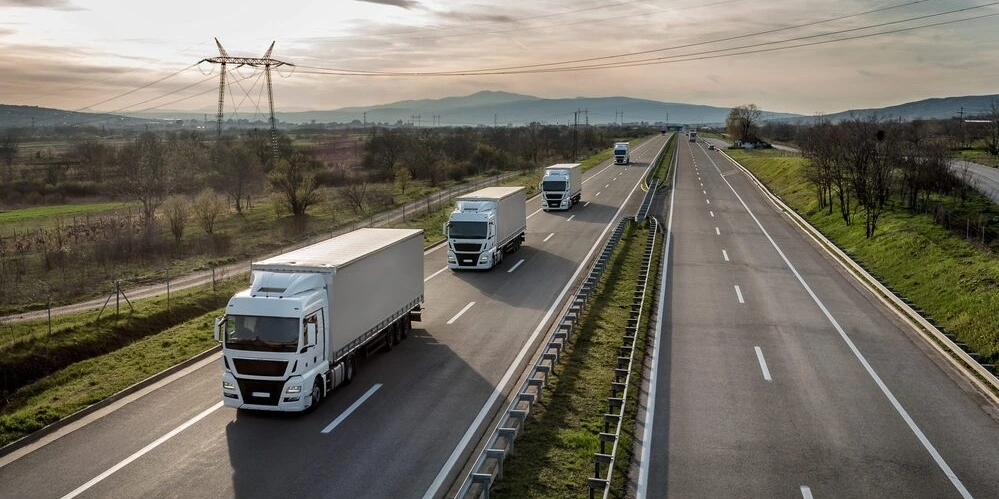The European Parliament has approved the revision of regulations regarding weights and dimensions in road transport with the aim of promoting the use of environmentally friendly trucks.
With a majority of 330 votes in favour, new provisions have been established to expedite the integration of heavy zero-emission vehicles, granting them an additional four tonnes to accommodate electric and hydrogen technology.
Additionally, the plenary supports further incentives for the ones used in road segments within the scope of combined and intermodal transport.
It also grants the capacity to use combinations of 44 tonnes and vehicles from the European Modular System for cross-border movements between consenting Member States.
Following the announcement, a significant portion of the sector has shown support for the resolution.
Among the first to react is the IRU, the global road transport organization representing the entire industry and advocating for sustainable mobility of people and goods.

Raluca Marian, IRU’s EU Advocacy Director, states:
“Facilitating border crossings with an additional four tonnes and supporting national and cross-border traffic with high-capacity vehicle combinations will improve road transport and the environment overall.”
It is noteworthy that the Parliament has given a very important signal by recognizing the need to provide incentives to further advance the decarbonization of activities.
These statements arise in a context where, for example, the German government has decided to backtrack on funding programs for eTrucks.
This measure is counterproductive, especially considering that the additional costs associated with eVehicles are approximately three times higher than those of diesel, making it difficult for medium-sized companies to transition to environmentally friendly vehicles.
In this regard, Raluca Marian argues that Member States must understand that accelerating the adoption of zero-emission vehicles cannot be achieved without accompanying operational incentives.
Similarly, the Nordic Logistics Association (NLA) expressed its support for the Parliament’s decision.
From the organization, it is maintained that this means their member companies can continue to carry out cross-border transports that are energetically efficient without necessarily adhering to the European Modular System (EMS).
The NLA is made up of the Danish Transport and Logistics Association (DTL), the Norwegian Road Transport Association (NLF), and the Swedish Road Transport Companies Association (SÅ).
It also works closely with its associate member SKAL, the Finnish Transport and Logistics Association.

“They can do it with fewer vehicles and drivers on the roads and at the same time reduce CO2 emissions per pallet transported,” says the president of the organization, Erik Østergaard.
And he explains: “Driving with heavier, longer, and taller combinations is the most efficient way for road freight transport to reduce fuel consumption, emissions, and the number of trucks on the road.”
While the new regulations are positive in terms of promoting electrification in the heavy road transport sector, there are still issues that require attention.
In this regard, Transport&Environment (T&E) warns that by allowing an increase in weight for diesel trucks, legislators are granting them a competitive advantage.
This is because, among key national borders, the weight limit for all vehicles, regardless of technology, will be 44 tonnes.
Therefore, while long-distance EVs need additional weight to accommodate batteries, the diesel ones will simply increase their loading capacity.

Bernardo Galantini, T&E’s Freight Officer, explains: “The extra weight allowance should only support long-distance electric trucks by ensuring no payload is lost to accommodate batteries.”
It is important to mention that currently, batteries for these heavy vehicles weigh between four and 10 tonnes.
Thomas Fabian, Commercial Vehicles Director at the European Automobile Manufacturers’ Association (ACEA), agrees with T&E.

“The existing regulations on weights and dimensions are no longer suitable and, in fact, penalize zero-emission vehicles, which tend to be heavier,” he says.
Therefore, it is hoped that the increase of four tonnes in weight and of one tonne in the axle may correct the imbalance with respect to diesel models, “but further adjustments are needed.”
The original proposal from the Commission aimed to facilitate the adoption of eTrucks by increasing the maximum allowed dimensions of length and weight throughout the EU.
This would allow vehicles to be equipped with batteries without compromising load capacity.
According to this proposal, all 44-tonne trucks, regardless of the fuel they use, could cross the borders of the Member States.
Green MEP Ciarán Cuffe expresses concern about this, as it would contribute to further degradation of roads and increased emissions.

“Making fossil-fuel-driven road transport even more competitive by allowing much heavier and larger trucks to travel on European roads is detrimental to road safety, infrastructure, and the decarbonization of our system,” Cuffe emphasizes.
Although diesel trucks of up to 44 tonnes can cross borders now, from 2035, the increase in weight limits will only apply to the zero-emission ones.
It is worth mentioning that Parliament will recess at the end of April, and the next step is tripartite negotiations with the Council in June 2024.
Depending on progress, the revised Directive could come into force from 1 January 2026.








